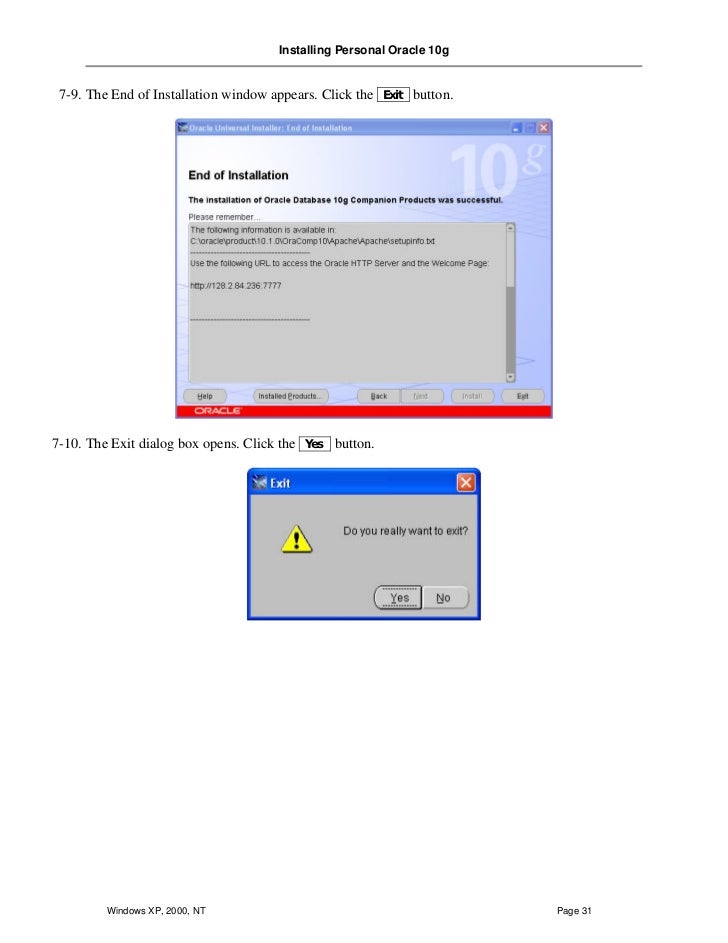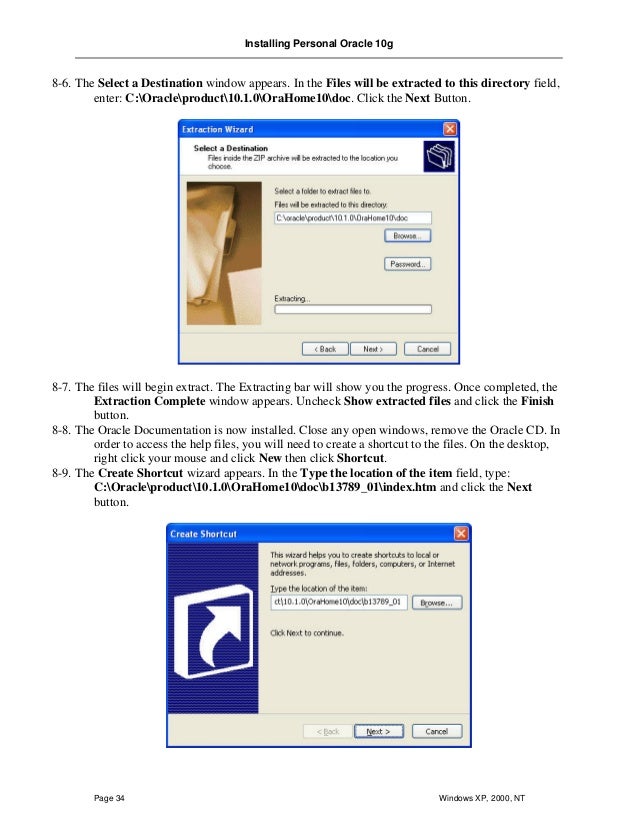
- #Oracle 10g installation how to
- #Oracle 10g installation install
- #Oracle 10g installation password
- #Oracle 10g installation free
Half the size of physical memory (in bytes)
#Oracle 10g installation how to
The procedure following the table describes how to verify and set the values. Verify that the kernel parameters shown in the following table are set to values greater than or equal to the recommended value shown. If the nobody user does not exist, then enter the following command to create it: To determine whether the nobody user exists, enter the following command:

#Oracle 10g installation password
Enter the following command to set the password of the oracle user:ħ. This command creates the oracle user and specifies oinstall as the primary group and dba as the secondary group.Ħ. # /usr/sbin/useradd -g oinstall -G dba oracle * If the oracle user does not exist, enter the following command to create it: # /usr/sbin/usermod -g oinstall -G dba oracle * If the oracle user exists, but its primary group is not oinstall or it is not a member of the dba group, then enter the following command: If necessary, complete one of the following actions: The output should be similar to the following, indicating that oinstall is the primary group and dba is a secondary group: To determine whether the oracle user exists and belongs to the correct groups, enter the following command: If necessary, enter the following commands to create the oinstall and dba groups:Ĥ. To determine whether the dba group exists, enter the following command:ģ. Inventory_loc=/u01/app/oracle/oraInventoryĢ. If the oraInst.loc file exists, then the output from this command is similar to the following: To determine whether the oinstall group exists, enter the following command: The following local operating system groups and users are required if you are installing Oracle Database:ġ.

To determine whether the required packages are installed, enter commands similar to the following:Ĭreating Required Operating System Groups and Users To determine whether the required kernel is installed, enter the following command : To determine which version of the operating system is installed, enter the following command:
#Oracle 10g installation install
If you do not see the expected output, then you cannot install the software on this system. Verify that the processor architecture matches the Oracle software release that you want to install. This command displays the processor type. To determine whether the system architecture can run the software, enter the following command:

#Oracle 10g installation free
To determine the amount of free disk space available on the system, enter the following command: To determine the available RAM and swap space, enter the following command: To determine the size of the configured swap space, enter the following command: To determine the physical RAM size, enter the following command: * 1.2 GB of disk space for a preconfigured database that uses file system storage (optional) * Between 1.5 GB and 3.5 GB of disk space for the Oracle software, depending on the installation type * 400 MB of disk space in the /tmp directory More than 8192 MB 0.75 times the size of RAM * The relationship between the available RAM and the required swap space.īetween 1024 MB and 2048 MB 1.5 times the size of RAMīetween 2049 MB and 8192 MB Equal to the size of RAM The system must meet the following minimum hardware requirements:

in /media, you can get and access the "Shared Folder" Add doownload location in Shared Folder from VirtualBox (Settings->Shared Folders -> Add Shared Folder -> Folder Path)


 0 kommentar(er)
0 kommentar(er)
